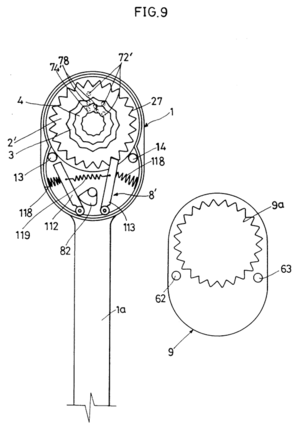Arm-powered wheel chair II
Abstract
A boy received a wheelchair last semester ( http://ttu-eime.csc.tntech.edu/index.php/Wheel_Chair_Controller ). The right wheel drive is wearing out, and he has outgrown the chair. Also there is no way to go backwards in it. The purpose of the project is to provide an improved wheelchair he can use with his disability.
Team members
Team Members:
Schilling, Matthew
Riggs, Courtney
Mueller, Kevin
Logue, Seth
Almutairi, Fahad
[last name], Fahad
Problem Statement/overview of the need
The chair is unusable due to growth of the child, also is beginning to wear down and is unable to move backwards.
Design Specifications
Must accommodate growth of child. Possible modular design to allow for future growth.
Must be able to have a reverse.
More durable than previous model.
Must include brakes for the child and parents.
Must be able to recline at a slight angle to keep the child in the chair.
Background research
1. What exists already, similar products:
Manual wheelchairs for people with low mobility in their arms are not widely available. Designs for this type of chair do exist, but they are not being manufactured like standard wheelchairs. A group from last semester designed a chair that allowed the user to move the chair forward with handles, rather than by the wheels.
2. availability:
This type of chair is not widely available and very expensive.
3. Gaps:
The design from last semester could not move in the backward direction. In addition, the designs on the internet do not have the safety features that are necessary for this project.
Conceptual Design
Summarize your conceptual design process. Develop at least three concepts.
We would like to create a chair that contains a ratcheting mechanism to move the chair forward and backward. We started researching ratcheting mechanisms and how we could add a switch to the mechanism to get motion in the opposite direction.
Design Concept 1
Ratchet mechanism similar to ratchet wrench with a mechanism to allow use with in reach of user.
Design Concept 2
We propose using bevel gears and a shaft to transmit rotational motion to the wheels. This would allow us to move forward and backwards, and the two sides would be independent of each other to allow for smooth turning.
Design Concept 3
We propose using a chain like a bicycle to move the chair forwards. It incorporates a free hub design so the chair can be pushed by the parents without difficulty.
Evaluate concepts/select candidate
Scale from 1-5. 1-worst 5-best
| Concept | Reverse | Ease of Repair | Ease of Assembly | Safety | Price | Ease of Use | Average |
|---|---|---|---|---|---|---|---|
| Ratcheting system | 4 | 2 | 3 | 5 | ? | 5 | 3.8 |
| Gears | 5 | 4 | 4 | 4 | ? | 3 | 4 |
| Chain | 1.5 | 5 | 4 | 3 | ? | 3 | 3.3 |
Of the three candidates proposed, we have found that the bevel gear design is the best overall concept; it excels in terms of its ability to reverse and its ease of assembly.
Detailed Design
This section will describe a detailed design process
Description of selected design
Detailed description of selected design
Analysis
Describe three types of analysis to be performed on the design
Engineering analysis 1
Engineering analysis 2
Engineering analysis 3
CAD Drawings
Insert drawings of all parts and the assembly
Bill of Materials
qty, item, description, source, part number, price
Assembly Instructions
Fabrication Process
Insert pictures of fabrication process
Testing and implementation
Describe testing, delivery, how used/received by the family
Photos of Completed design
Insert pictures of the final product
Instructions for safe use
Provide a clear summary of safe use for the family. Do not use the device unless supervised by an adult that has been fully understood the safe use of this product.



